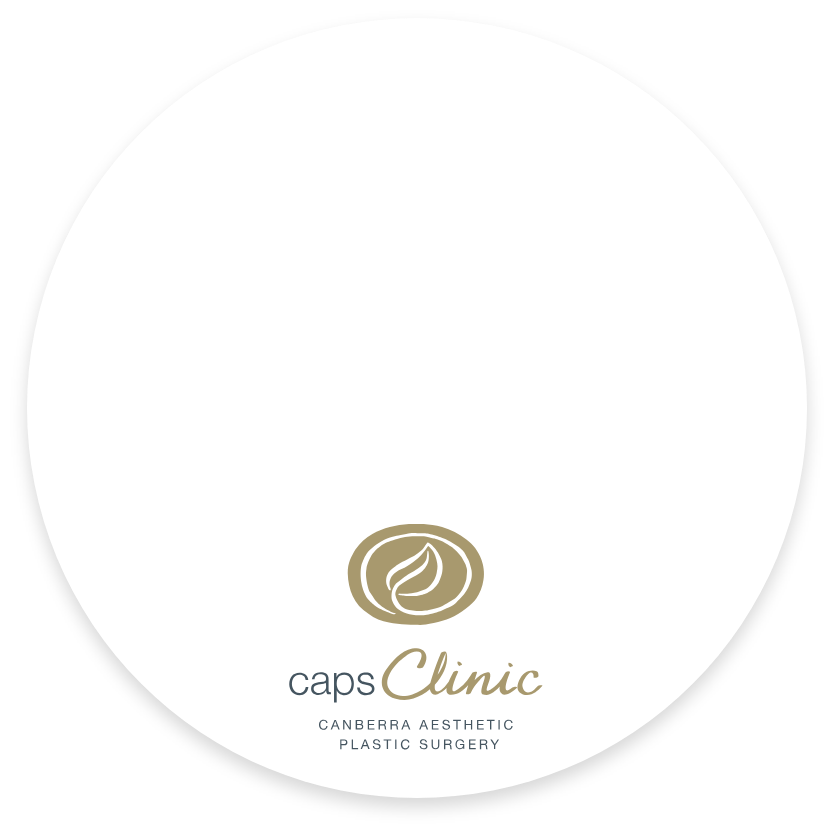
Massive weight loss is an achievement to be celebrated, but once you have lost the weight, your skin rarely retracts and the excess skin is left behind. This may be affecting your arms, thighs, breasts, tummy, thighs, or all of them. Body Lift surgery is major surgery, often involving the removal of massive amounts of skin and as a result scarring is especially prominent, however the results from a body lift can see you fitting into clothes better, find walking and exercising easier, or return to driving or activities that your excess skin may have been preventing.
A body lift is major surgery but the results will restore shape and definition.
Dr Alastair Taylor (Bachelor of Medicine, Bachelor of Surgery | The Fellowship of the Royal Australasian College of Surgeons | Provider No. MED0001401767)
Find out more about our treatments by selecting an option from the drop down menu.
Body lift, or body contouring, surgery involves removal of fat and or excess skin to improve skin tone and definition, resulting in the body’s size and shape being modified.
A consultation with Dr Taylor will discuss your concerns, determine the extent of the surgery required to achieve the results you want, and if surgeries can be combined or performed separately.
It is a long and complex operation to do an abdominoplasty together with a body lift so it is usually done in stages with the abdominoplasty done first. The posterior body lift, or thigh lift, is performed 6 to 12 months later, resulting in a more even and predictable result. The next area would be the breasts, chests and arms, this is often performed as a single surgery.
Staging the surgeries may limit the number of surgeries you need. As each area recovers, you may find the extent of the repair required is nowhere as significant as you originally thought.
To minimise risks, Dr. Taylor prefers to perform weight loss surgery in stages.
There are many options for removal of excess skin but the patient needs to have a voice about where they would like to start. Dr Taylor has performed over a thousand weight loss surgeries covering everything from abdominoplasty, body, thigh, breast and arm lifts. He has also developed a unique spiral wedge which he uses to address the excess back skin. Every patient’s surgical journey is different so a “one size fits all” doesn’t work. A comprehensive overview addressing individual needs is the way Dr Taylor approaches this.
The body lift operation can take between 5 and 10 hours depending on the repair and whether it is performed in one or two stages. The operation is performed under general anaesthetic and may require up to 3 days stay in hospital, depending on the extent of the surgery. You will require 3 weeks off work and up to 6 weeks before returning to normal activity. You will also wear a compression garment after your operation.
The thigh lift addresses excess skin around the inner thighs. It is performed after an abdominoplasty or body lift as the thigh lift needs a stable pubic anchor to be successful. The thighs sag down and inwards with weight loss, the lift excises this excess skin and fat.
Dr Taylor will discuss a thigh lift when a patient presents with chafing and difficulty finding clothing to fit around the legs following weight loss.
The thigh lift is done mostly by liposuction and then skin excision leaving a scar running from the inner knee to the groin. It is important not to damage lymphatics and veins which could lead to permanent swelling of the calves and feet. Liposuction prevents this and also means the wound edges do not need to be undermined for skin closure improving the blood supply to the wound edges. No drain is used.
Surgery is performed under a general anaesthetic and requires a minimum overnight stay.
Excess skin on the arms can be excised as a primary procedure (known as brachioplasty). However, in most weight loss cases this is also the best time to address the breasts (even in men) and excess skin on the side of the chest that forms part of the back roll.
This is a comprehensive operation lifting or reducing the breast, tightening the lateral chest and removing excess skin from the upper arms. It is one of the longest body contouring procedures at nearly 7 hours but it does deal with the upper body in one operation and recovery.
Surgery is performed under a general anaesthetic and requires a minimum overnight stay.
Some weight loss patients, particularly those with an apple shape whose weight was mostly carried in the abdomen, still have a thick waist following abdominoplasty and lateral chest wedges.
A spiral wedge creates a waist by removing an oblique flap of skin and fat from the shoulder blade down to the lateral pelvis. It is a scar that can be seen but it is far more effective in tightening the torso than a “bra line back lift” which removes skin horizontally from the back.
Surgery is performed under a general anaesthetic and requires a minimum overnight stay.
A body lift is major surgery but the results will restore shape and definition.
Dr Alastair Taylor (Bachelor of Medicine, Bachelor of Surgery | The Fellowship of the Royal Australasian College of Surgeons | Provider No. MED0001401767)




ANY SURGICAL OR INVASIVE PROCEDURE CARRIES RISKS. BEFORE PROCEEDING, YOU SHOULD SEEK A SECOND OPINION FROM AN APPROPRIATELY QUALIFIED HEALTH PRACTITIONER (EG. YOUR GP).
Dr Alastair Taylor (Bachelor of Medicine, Bachelor of Surgery | The Fellowship of the Royal Australasian College of Surgeons | Provider No. MED0001401767) will discuss the general and specific risks during your consultation, where you can ask questions and discuss any concerns you may have. Is it important that you have enough information to weigh up the benefits, risks and limitations of your surgery. You will also be provided with more information to take home and read, and discuss with your family or loved ones.
Risks specifically associated with body lift surgery may include:
Some general risks and complications of surgery may include:
Dr Taylor performs body lift surgery either at Sole’vita Surgery, Calvary John James Hospital in Deakin or National Capital Private Hospital. Dr Taylor will discuss this further, and any options available to you, during your consultation.
Your surgery may be booked at our private hospital, Sole’vita Surgery, a licensed medical hospital accredited under the National Safety and Quality Health Service (NSQHS) Standards. Sole’ vita Surgery is part of The CAPS Clinic, with all services conveniently based in the one location in Deakin, Canberra.
Our facilities include modern surgical theatres, sterilisation services and recovery areas. Our overnight rooms feature flexible privacy glass-panelling and personal ensuite.
All of the Sole’ vita team are fully qualified and registered medical personnel, with no more than 5 patients staying at once, our patient-to-nursing-care ratio is very high.
We allow up to a 3 day stay after your surgery, depending on the extent of your lift, so that you can take your time to rest and recover.
Dr Alastair Taylor (Bachelor of Medicine, Bachelor of Surgery | The Fellowship of the Royal Australasian College of Surgeons | Provider No. MED0001401767) is a highly qualified Specialist Plastic & Reconstructive Surgeon. Learn more about Dr Taylor.
If your body lift surgery takes place at our Sole’vita Surgery private hospital, you can be assured that Dr Taylor leads a dedicated team of qualified health care professionals, including anaesthetic staff and nurses. His team have built a reputation for quality and are committed to achieving results for our clients whilst providing personalised care, with your safety, privacy and comfort at the forefront of all work.
Weight loss surgery is only claimable on both Medicare and your Private Hospital Insurance if you have lost five BMI points (not including partum weight) and remained stable at this weight for at least 6 months.
Fees include Dr Taylor Surgeons fee, Anaesthetist fee, Theatre and the Overnight Stay in Hospital costs, starting from $13,000. (Please note, patients with a BMI over 28 may incur additional fees).
To receive a formal quote you are required to have a consultation with Dr Taylor. The quote for the cost of your surgery is valid for 3 months. Some fees may not be included in this quote, including medications, pathology, physiotherapy and costs arising from any complications. Further information will be provided to you during your consultation.
Dr Taylor’s fee includes:
To help you prepare for your surgery and enhance your recovery, we offer you a pre-surgery program to start 4 to 6 weeks prior to your surgery. This includes taking a supplement to aid recovery and get you back on your feet faster. We also recommend an effective herbal medication to reduce the bruising and swelling associated with your surgery. You will also need to stop certain medications leading up to your surgery and we recommend ceasing smoking six weeks prior.
Planning for your surgery and your recovery in advance is vital. Understanding what you can and cannot do will ensure you are not put in a position where you put yourself or the success of your surgery at risk. All this will depend on your personal situation. Dr Taylor insists you refrain from any major or minor physical duties and take three weeks off work. You will be provided with a discreet medical certificate to accommodate any time required off work.
On discharge from Sole’vita Surgery we recommend:
After your operation, you will have a catheter, patient controlled analgesia (PCA) machine, and drains. The catheter and PCA are removed on day two, and the drains are removed on the day of discharge.
On return from theatre, you will be placed in a very tight fitting compression garment. This garment is worn 24 hours a day (excluding showering) for the first two weeks and then during the day for another 4 weeks.
Extensive surgery bruising and swelling are to be expected. The liposuction component of the surgery will cause the most discomfort and often patients describe the straightening up process like a ‘Chinese burn’. It is for this reason we recommend a prolonged hospital stay. After your PCA is removed, taking regular oral pain medication can assist you to be more comfortable.
Dr Taylor will make hospital visits every day to manage your recovery. You may require up to 3 days stay in hospital. Discharge planning will include wound care and management of your dressings, prescriptions for medications, and follow up appointments.
You are encouraged to take a minimum of 3 weeks off work and plan not to be back to normal routine and activity for at least 6 weeks.
Two weeks after your surgery, you will come to Sole’vita Surgery to have your sutures removed and your wounds checked by one of our nurses. You will have follow up appointments with Dr Taylor at both the 6 week and 6 month stage of your journey.